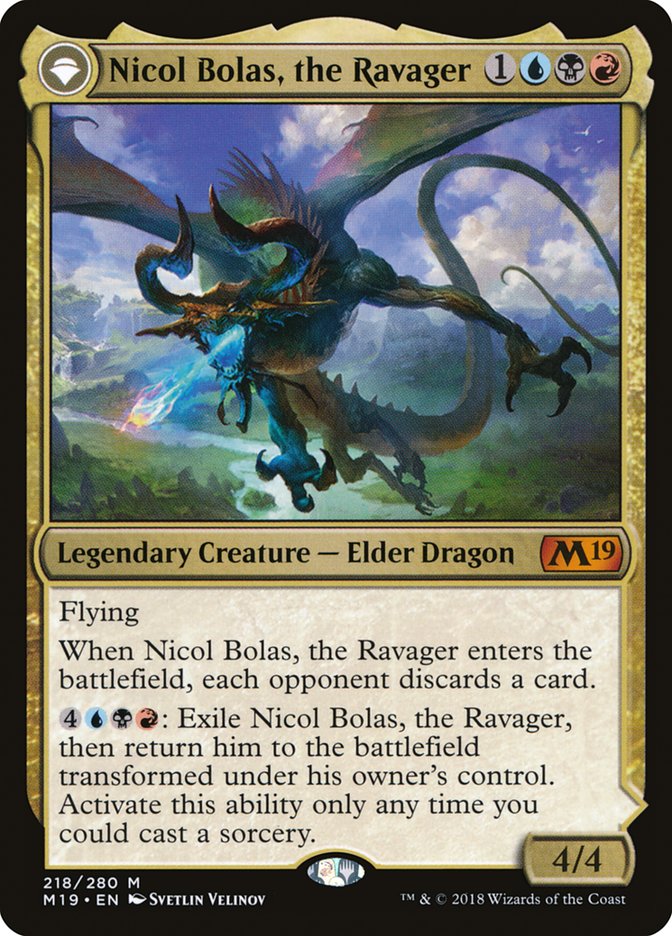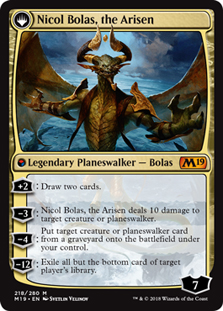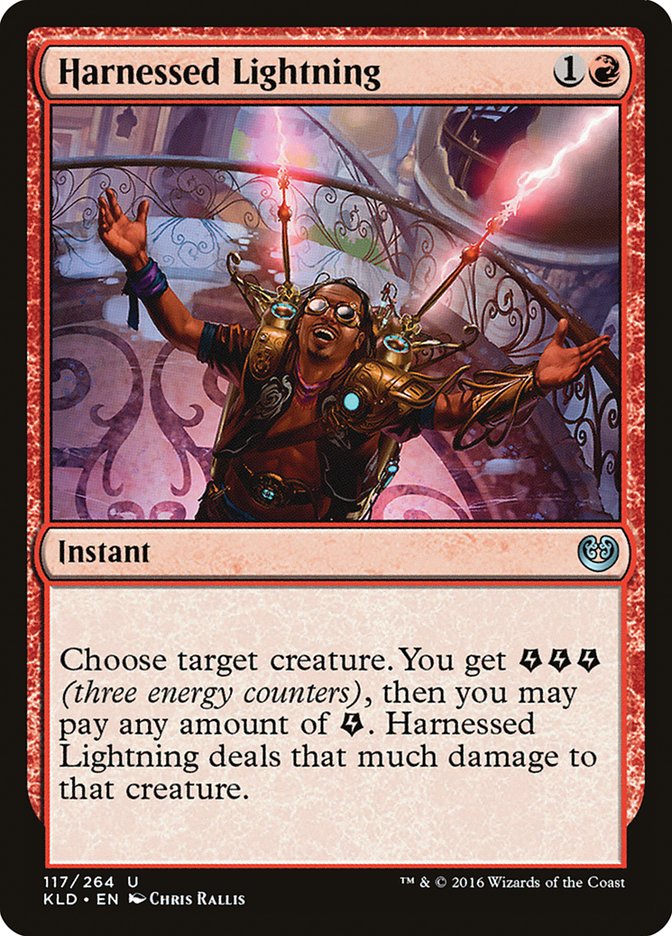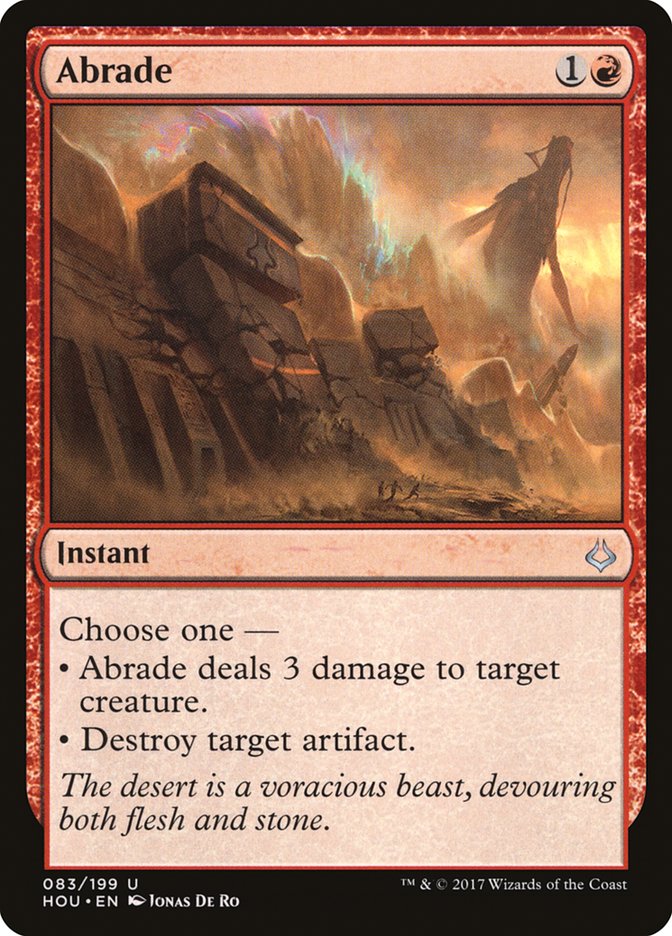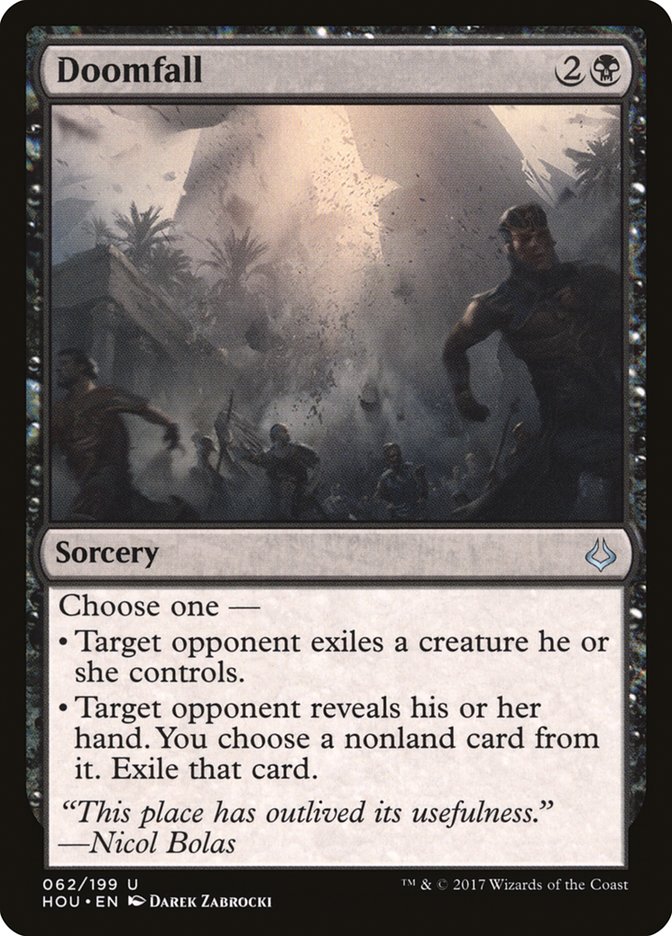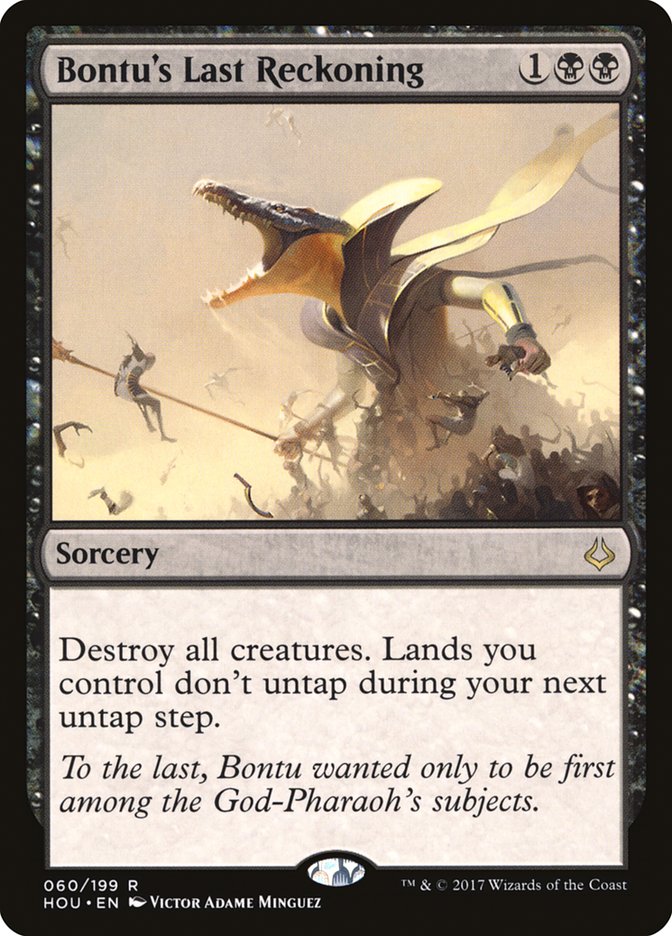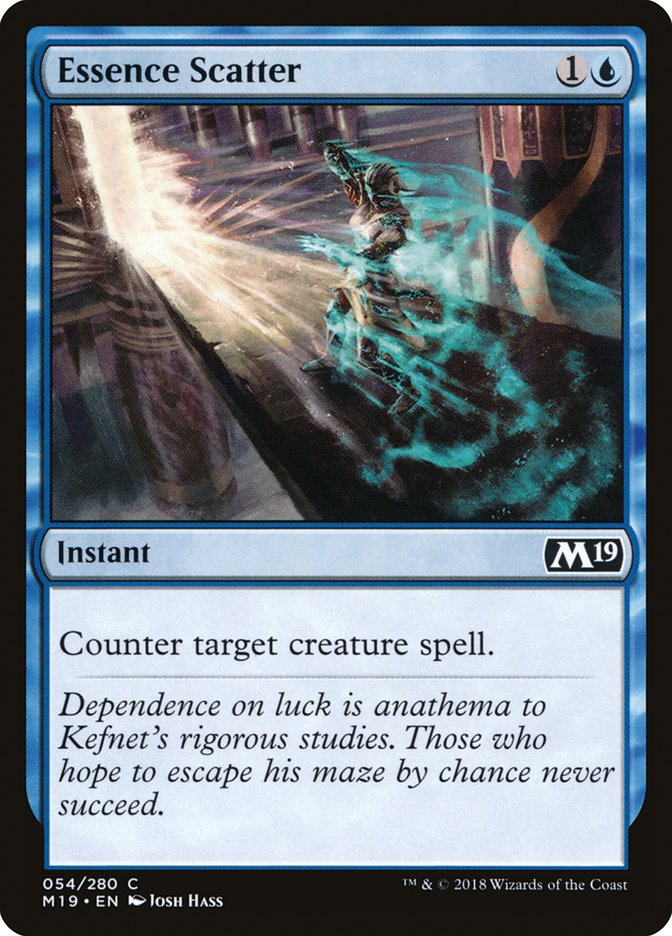There, I said it. It’s out there. And if you’re feverishly typing out a
response in the comments in defense of the great and powerful Siege Rhino,
I humbly ask that you continue reading before doing such a thing. After
all, you haven’t even read the article.
Manabases are certainly worse right now than they were during Siege Rhino’s
run through Standard, but that’s okay. We’re doing just fine with the dual
lands we have right now, as three-color decks seem to keep popping up all
over the place. Most of the time, it comes in a small splash, like R/B
Aggro playing Unlicensed Disintegration and Scrapheap Scrounger. And before
the bannings, playing three colors was rather easy when you had access to
Attune with Aether. Four-Color Saheeli was also fairly smooth before that.
With that said, there are sacrifices to make when you play three or more
colors, but that’s basically how it’s always been. You take more damage
from your lands, they enter the battlefield tapped, or occasionally lose
functionality after two or three uses. We make do with what we’re given
access to in order to play more powerful, and harder to cast, cards. And in
this particular case, I think Nicol Bolas, the Ravager is certainly on the
list of “reasons to splash another color.”
A lot of people have broken down the abilities of Nicol Bolas, the Ravager
already during preview season for Core Set 2019, so I won’t insult
your intelligence by explaining why a 4/4 flier with a great ability that
turns into a Planeswalker later in the game is good. You know it’s good.
You just don’t know how good it is because it hasn’t been legal in Standard
for very long.
-
When a R/B Aggro deck is willing to splash a third color for a
card, you know it’s good. -
When you actively want to play four copies of a legendary card, you
know it’s good. -
When drawing two copies is better than drawing one copy, you know
it’s good.
With such a strong enters the battlefield effect and large, flying body,
four mana is a steal. But in my first reaction to seeing the card, I didn’t
think that it would transform into a Planeswalker very often. In fact,
trying to transform it could lead to some blowout turns where your opponent
could kill it in response, effectively stealing an entire turn from you.
I was wrong.
The play patterns for Nicol Bolas are so much different than I initially
expected. As long as you have some sort of bait in the early turns to draw
your opponent’s removal, your second Nicol Bolas should be able to flip
pretty easily. Forcing your opponent to have two solid removal spells for
your four-drop means they’re starting to stretch pretty thin as the game
progresses. If they kill your Glint-Sleeve Siphoner and your first Nicol
Bolas, every large threat you draw after that is more and more likely to
survive. And that’s a pretty big deal in a deck that actively wants to cast
The Scarab God as quickly as possible!
If you’re playing Nicol Bolas against an aggressive opponent, the
likelihood of hitting one of their more powerful spells out of their hand
is also pretty high. By the fourth turn, they’ve usually dumped most of
their early stuff, so you’re making them discard one of their four-drops or
a removal spell. And in either case, you’re usually okay with that. Yeah,
sometimes a lategame Nicol Bolas will be attacking their empty hand, but
that just means the coast is likely clear on the next turn to transform it
and start drawing cards, killing opposing threats, or bringing back some
busted threat out of the graveyard.
While the backside of Nicol Bolas, the Ravager isn’t quite as good as most
Nicol Bolas Planeswalkers we’ve seen in the past, that isn’t too big of a
deal when you realize just how good the front side is. And when you combine
the two sides of this powerful card, you start to understand exactly what
it means to cast it, how you should build your deck around it, and how your
opponents are going to play against it. Just like Siege Rhino and going to
six or less life is a dangerous prospect, playing out your fourth or fifth
land is occasionally incorrect. Killing one of the early creatures might
mean you lose to Nicol Bolas. Discarding the wrong card might mean you end
up letting Nicol Bolas transform.
Building Your Deck Around Nicol Bolas
There are a number of ways you can approach building a deck around Nicol
Bolas, the Ravager. For starters, you need to figure out if you want to be
aggressive, defensive, or somewhere in the middle. With such a large body
at a cheap cost, I think somewhere in the middle is desirable. Being a
control deck with Nicol Bolas as your only creature means all your
opponent’s removal is going to target it and the likelihood of it
transforming decreases. That means playing two and three mana creatures to
bait your opponent’s removal.
If you want to be more aggressive, that’s also fine, though your likelihood
of transforming also decreases because you don’t want to play too many
lands. Hitting your seventh land in an aggressive deck isn’t all that
great, but the upside is that you get a great effect and great body for a
low investment. There’s also the downside of playing three colors in your
aggressive deck, which will likely come back to bite you at some point when
one of your lands enters the battlefield tapped. But I could certainly be
wrong, as Nicol Bolas gives you some incentive to build your deck in a
unique way. Playing more lands might be correct and not affect you that
much. Lands like Aether Hub and Spire of Industry won’t enter the
battlefield tapped, and you could build your manabase around those instead
of the cycling dual lands like Canyon Slough. Matt Severa did a fantastic
job of covering aggressive versions of Grixis yesterday, so be sure to
check that out
.
But I’m here for the sweet spot, a midrange Grixis deck featuring Nicol
Bolas. As a midrange deck featuring a good amount of removal, we must
decide which colors we want to focus on. If we lean hard on black and blue
as our main colors, building around the core of the older B/U Midrange
decks, that means our removal spells should be Fatal Push, Cast Down, and
Vraska’s Contempt. But Fatal Push seems to be less and less reliable after
sideboard against the R/B Aggro decks. Once you get to the sideboard, they
shift into a much bigger version of their deck. Instead of the cheaper
creatures they would normally rely on, they bring in stuff like
Glorybringer, Hazoret the Fervent, and more Planeswalkers. These cards are
fairly problematic when your removal has limitations.
In my initial testing of the archetype, I found myself regularly getting
stuck with these types of removal spells in hand as the game progressed,
even after siding most of them out. I’d lose to Kari Zev, Skyship Raider
with Cast Down staring back at me. I’d get destroyed by Glorybringer with
Fatal Push rotting in my hand with no targets. What if leaning on black for
all the removal was just worse than red? Then I saw this.
Creatures (18)
- 2 Torrential Gearhulk
- 3 Whirler Virtuoso
- 4 Glint-Sleeve Siphoner
- 2 The Scarab God
- 3 Champion of Wits
- 4 Nicol Bolas, the Ravager
Planeswalkers (2)
Lands (26)
Spells (14)

Harnessed Lightning just seemed like it could fix all those problems. Of
course, that meant changing the mana a bit, leaning harder on red and
moving to a blue “splash,” but really this deck is just a hard three
colors. And while your mana can be a bit shaky sometimes, it isn’t nearly
as bad as it looks. With so many two-drops in the deck, you will often find
yourself playing a tapped land on the third turn and using your two mana to
take down another creature or casting a Glint-Sleeve Siphoner.
The strength of Harnessed Lightning in this deck is tough to pin down. Not
only does it pair nicely with stuff like Glint-Sleeve Siphoner and Aether
Hub to combo-kill larger creatures, but it can also be “cycled” against
creature-light decks to gain more energy for both Siphoner and Whirler
Virtuoso. This is nothing new, as we’ve seen Harnessed Lightning do
wonderful things in the past in a number of decks (many of which got hit
with bans). And while it isn’t as turbo powered here as it’s been in the
past, it’s still very good. A two-mana removal spell that can kill
virtually any creature is a great rate, and it makes sense in the current
Standard environment.
Abrade is also a fine addition to the deck, giving you some flexibility
against decks like God-Pharaoh’s Gift. It’s generally worse than Fatal Push
against the more aggressive strategies, but it’s still useful in the early
turns while you develop your mana. And since you’re so heavy on all three
colors, you’ll usually have to take a turn off here or there for a land to
enter the battlefield tapped, so having access to Abrade on the third turn
usually doesn’t throw off your curve very much. Of course, in the games
where you want to cast Glint-Sleeve Siphoner and kill a creature on the
third turn, you don’t have access to Fatal Push for it, which is a huge
bummer. That’s one of the major reasons why I loved to B/U Midrange decks,
as you had so few lands enter the battlefield tapped and you were able to
double-spell more quickly (and more frequently) than all the three-color
midrange and control decks. But Nicol Bolas is definitely worth the third
color.
Abrade also gives you some range in your removal when it comes to killing
Vehicles, which are particularly problematic for a deck whose sole removal
that could kill an Aethersphere Harvester or Skysovereign, Consul Flagship
was a four-mana instant. That meant your opponent could wait for you to tap
out, basically never crewing their vehicle until it was safe. Now with
Abrade, we get to clear that pesky Heart of Kiran or whatever on our own
time, as opposed to waiting for it to be crewed, allowing us to untap and
cast a big, bad threat like Nicol Bolas, the Ravager, The Scarab God, or
Liliana, Death’s Majesty.
The Vine Mare Problem
My teammate at SCG Philadelphia played a very similar list to this, but I
think we can make it better. Right now, Vine Mare (and Mono-Green Aggro) is
pretty popular, which isn’t great for a deck focused around removal and
black creatures. Hexproof has always been annoying, but being unable to
block with your horde of Zombies from The Scarab God is definitely a
bummer. For that reason, I expect the following cards to see more play.
Doomfall has really impressed me as of late. Taking away one of your
opponent’s better cards from their hand is always a bonus, but acting as a
method of removing some of the more problematic creatures in Standard is
also a huge boon for a deck like Grixis. On top of that, Doomfall is a
removal spell that doesn’t get sideboarded out very often. Most decks in
Standard will always have something you need to exile, or some sideboard
card that could be tough to beat if cast. And since Doomfall is rarely a
dead card, acting as removal or discard when appropriate, it’s one of the
safest slots you can put in your deck.
With that said, playing more copies of Doomfall means you have fewer
instants, which also means that Torrential Gearhulk gets a lot worse. That
isn’t necessarily a bad thing though, as I’ve been thinking about cutting
it from the deck anyway. Of course, Torrential Gearhulk is one of the most
powerful cards in any Grixis deck, if only because it gives you a way to
cast more copies of Vraska’s Contempt, but if the metagame is calling for
more Doomfall, we’re going to have to make some sacrifices. In times past,
the B/U Midrange used Torrential Gearhulk as a value card, bridging the gap
until you could hit nine mana and cast plus activate The Scarab God in the
same turn. Now, with Nicol Bolas filling that role nicely, and doing
similar things to The Scarab God without stepping on its toes on the curve,
I’m currently under the impression that playing zero copies of Torrential
Gearhulk is just correct!
This is the card I’m most expecting to see an uptick in sideboards in the
coming weeks. Not only does it give you a cheap way to obliterate your
opponent’s side of the battlefield but it’s basically the only option for
black to deal with a horde of small creatures. Green creature decks, and
this one in particular, are pretty soft to a mass removal spell. U/W
Control has a pretty easy time beating up on these creature decks because
they have so few ways to stop their entire side of the battlefield from
getting massacred by a Fumigate or Settle the Wreckage. And while Bontu’s
Last Reckoning has a pretty savage drawback, the effect is still powerful
enough (and slows them down enough) that playing a few copies is definitely
what you want to be doing right now. And the fact that it can kill Vine
Mare is particularly appealing.
Brad Nelson talked quite a bit about Supreme Will
last week
, and I’ve definitely been keeping track of the builds that people are
playing on Magic Online. The cheap counterspells like Essence Scatter,
Supreme Will, and even Syncopate to some degree all have been seeing more
play as of late out of the B/U/X Midrange strategies to have more maindeck
answers to Vine Mare, or other problematic creatures (like Nicol Bolas).
As the format progresses, if the big green creature decks continue to put
up strong results, I could definitely see the metagame shifting to
compensate. After all, a deck as linear as these tend to do worse over time
as people adapt. And though Vine Mare is a particularly big problem for
something like Grixis or B/U Midrange, having access to cards like these
(or just more counterspells) is going to be much more important in the
short term.
An Almost Polished Product
Taking all these notes into consideration, as well as playing with the deck
quite a bit over the last few days, here’s the newest iteration I would
recommend. And while I still think it could use some work, specifically on
the manabase, things are going pretty well so far.
Creatures (17)
- 3 Whirler Virtuoso
- 4 Glint-Sleeve Siphoner
- 3 The Scarab God
- 3 Champion of Wits
- 4 Nicol Bolas, the Ravager
Planeswalkers (2)
Lands (26)
Spells (15)

As you can see, the deck probably wants to find a way to play a few more
basic lands. Four is not very many, and having a few more Swamps would
definitely help more of the lands enter the battlefield untapped since
we’re so heavy on Dragonskull Summit and Drowned Catacombs. Unfortunately,
I haven’t found the right cuts yet to make room for more Swamps, but that’s
just something that you adjust over time with more hours under your belt.
I’ve never been someone who could look at a manabase and just know exactly what to change. I must feel it out over the
course of a few matches. One game I notice I have way too many red sources?
Trim a Dragonskull Summit or Sulfur Falls. Am I regularly missing one of my
colors? See which one(s) I’m having trouble hitting and try to fit in a few
more lands that produce that colored mana. And, occasionally, just add
another land!
In a deck like this, I don’t even think a 27th land would be all that bad.
And while we did cut Torrential Gearhulk for cheaper cards, this deck will
eat through mana pretty quickly as the game plays out. And luckily for you,
your deck has multiple ways to use that extra mana in Nicol Bolas and The
Scarab God.
If you’re a fan of Grixis or midrange strategies in general, I would
definitely give this one a shot. Nicol Bolas, the Ravager is just so much
better than most people think it is. And if you haven’t played with it yet,
trust me, you’ll get it.
Right when your opponent fails to kill the second one, you’ll understand.



